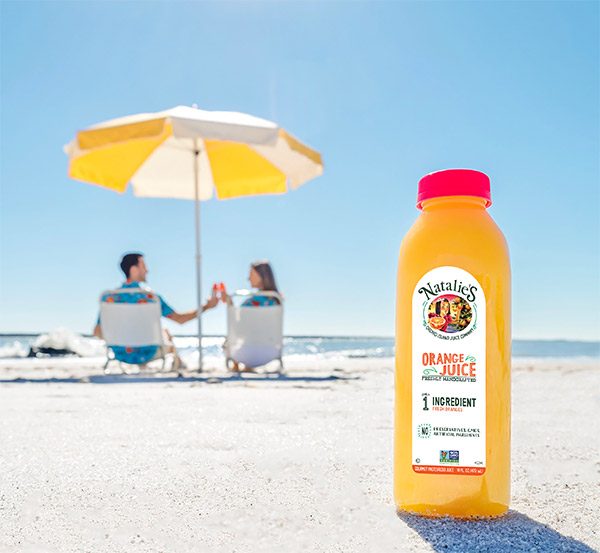Natalie’s Featured on Travel Pulse
Why Do We Love Tomato Juice On An Airplane?
Date: June 30th, 2016On the ground we all prefer beer, sodas and water to slake our thirst. But when we’re up in the air, for some reason, the go-to beverage is tomato juice. It’s an umami-fueled beverage that dazzles the senses and goes well with vodka.
Normally that would be enough to explain why we adore this stuff so much when flying, but we spoke with Natalie Sexton who is the marketing director of Natalie’s Orchid Island Juice Company, a 27-year old, family-operated business.Sexton offered some thoughts on the juice industry in regards to airlines. But first we might as well explain that you passengers really do love tomato juice.
Steven Jackson writes in a NewsWorks article: “A few years ago, the German airline Lufthansa realized they served about 53,000 gallons of tomato juice annually. That’s just shy of the 59,000 gallons of beer they serve each year.”
A 2012 New York Times article explains the effect that happens when humans climb to remarkable heights. Basically, we are left with senses that don’t work nearly as well as they do on the ground.
The article states: “Even before a plane takes off, the atmosphere inside the cabin dries out the nose. As the plane ascends, the change in air pressure numbs about a third of the taste buds. And as the plane reaches a cruising altitude of 35,000 feet, cabin humidity levels are kept low by design, to reduce the risk of fuselage corrosion. Soon, the nose no longer knows. Taste buds are M.I.A. Cotton mouth sets in.
We are left to pass the time with food that’s rich in sodium thanks to the dulled senses. Which is perhaps why that fast-food burger tastes so darn good when you pop it open mid-flight.
Sexton explains that the sodium rich juices are exactly what you get in-flight, which isn’t exactly great for your health.
Sexton states: “The majority of tomato juice sold to airlines are shelf label, which immediately tells you that they aren’t fresh. They can last one to two years without being refrigerated. Not only that but they typically have anywhere between 200 and 600 milligrams of sodium. And then you look at the ingredients… there is anywhere between five and 10 ingredients in your tomato juice.”
Sexton remains one person hopeful that the airlines might one day infuse travel with more dietary sense as well as taste that would also work at ground level: “The more consumers demand in all categories the more it will push airlines that provide that. I get the obstacles with the volume they have to overcome and the logistics.”
Sexton notes that actual tomato juice may surprise you. It’s not salty by nature and has a fresh quality you might enjoy.
As for why we go mad over the stuff, she has some thoughts: “I think a lot of it is, people enjoy Bloody Marys when they’re flying. I also think the culture of drinking tomato juice is generational…But also our senses are dulled when you’re up in the air that high. The spicy tomato juice is so flavorful it kind of enhances what you’re drinking.”
But if you really want to stay fit while traveling, Sexton really likes beet juice for the itinerary: “Beets are fantastic for you, nutritionally, and they also increase the amount of oxygen in your blood.”
But overall, eating fresh will give you the energy you need – at least that’s worked for Sexton in the past.
So if you are looking for why we love tomato juice on the plane. Perhaps it’s because those shelf labels have been dulled down to palatable levels.
None of this, by the way, excuses actually eating the food offered to you on an airplane.
Article by: GABE ZALDIVAR
Read the full article at TravelPulse.com


